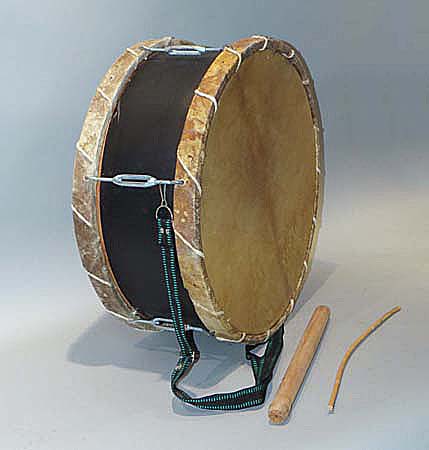
Owner: HWMC
Catalog#: 2ME-MBST-01
Struck Membranophones
Lebanon 'Davul' (tabl turki)
Lebanon
Lebanese
Wood, skin hide, metal
Mid 20th century
Diameter: 20.75 in; Frame Width: 8.9 in
Membranophones – Struck Membranophones
The davul is a double-headed cylindrical drum from many countries of the Middle East and southeastern Europe. This davul is from Lebanon and is sometimes referred to as the Turkish davul. A plank piece of wood is usually steamed and bent to make the hoop/frame. On this davul there is also a black fabric cover stapled to the hoop. The sides are covered on two-sides with goatskin or sheepskin. The left side is thicker skin than the right side. The hides are then framed with wooden rims and tied on with rope sewn around the rims. There are 6 metal hooks which stretch across the frame to hook onto both rims. Attached to two of the hooks is a black and green adjustable shoulder strap. There are 2 beaters included, one thick stick that is club-like, made from carved wood called tokmak (‘mallet’) or coma (‘stick’), and one smaller and thinner, made of bamboo, called cubuk (‘twig’).
When played, the duval is suspended from the left shoulder and the heavier beater strikes the thicker head on the left side, while playing the main/stronger beats. This drum is played along with the zurna (oboe) for outdoor dancing and processional music. It is also used alone for signaling.
Reference: L. Picken: “Folk Musical Instruments of Turkey’ (London, 1975).
